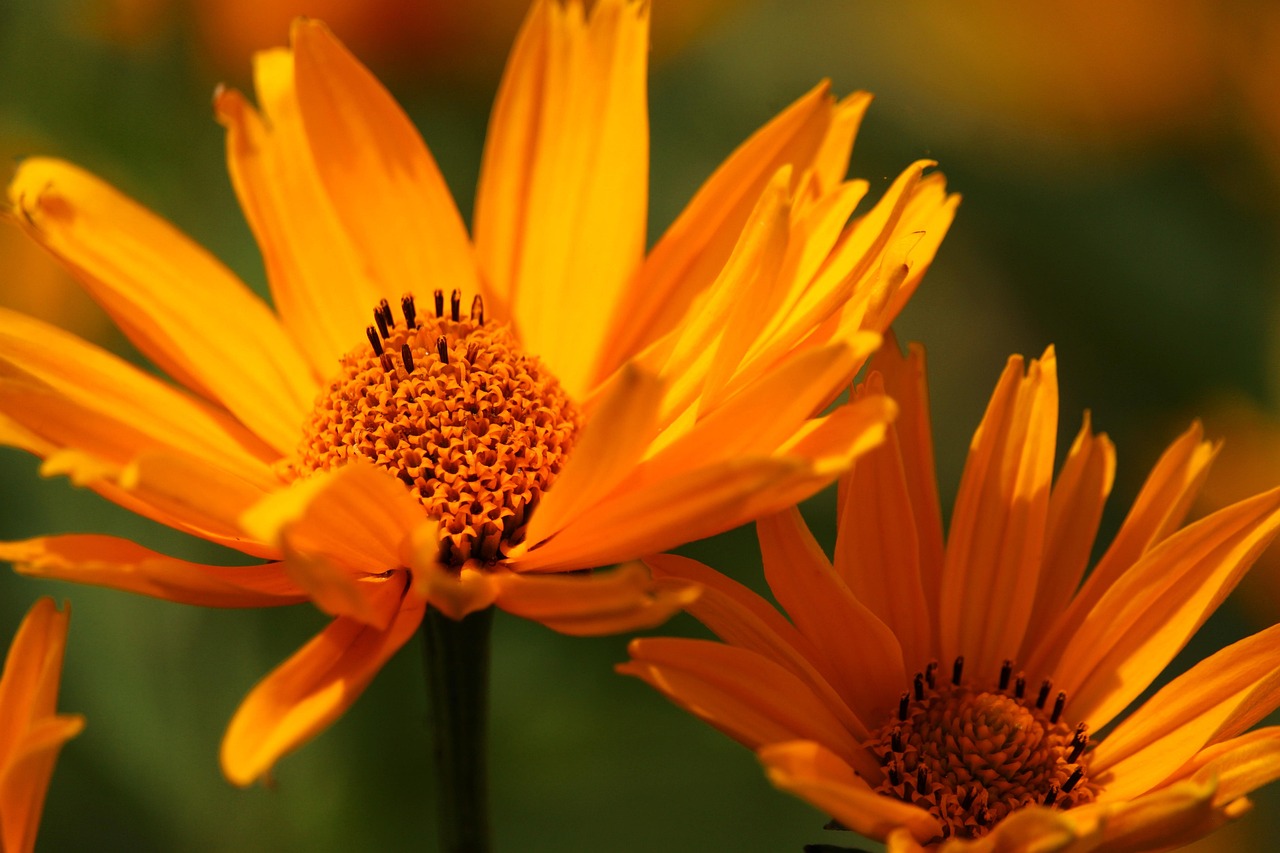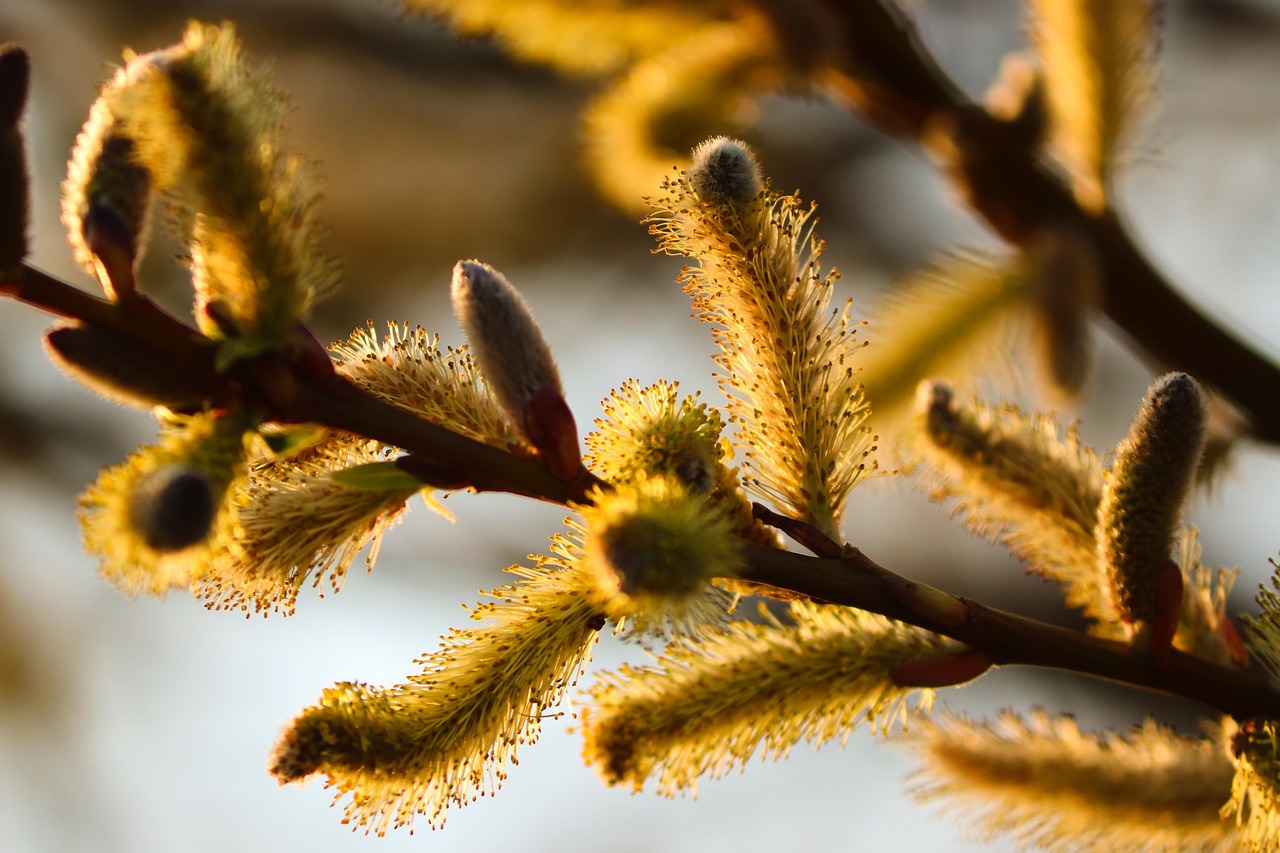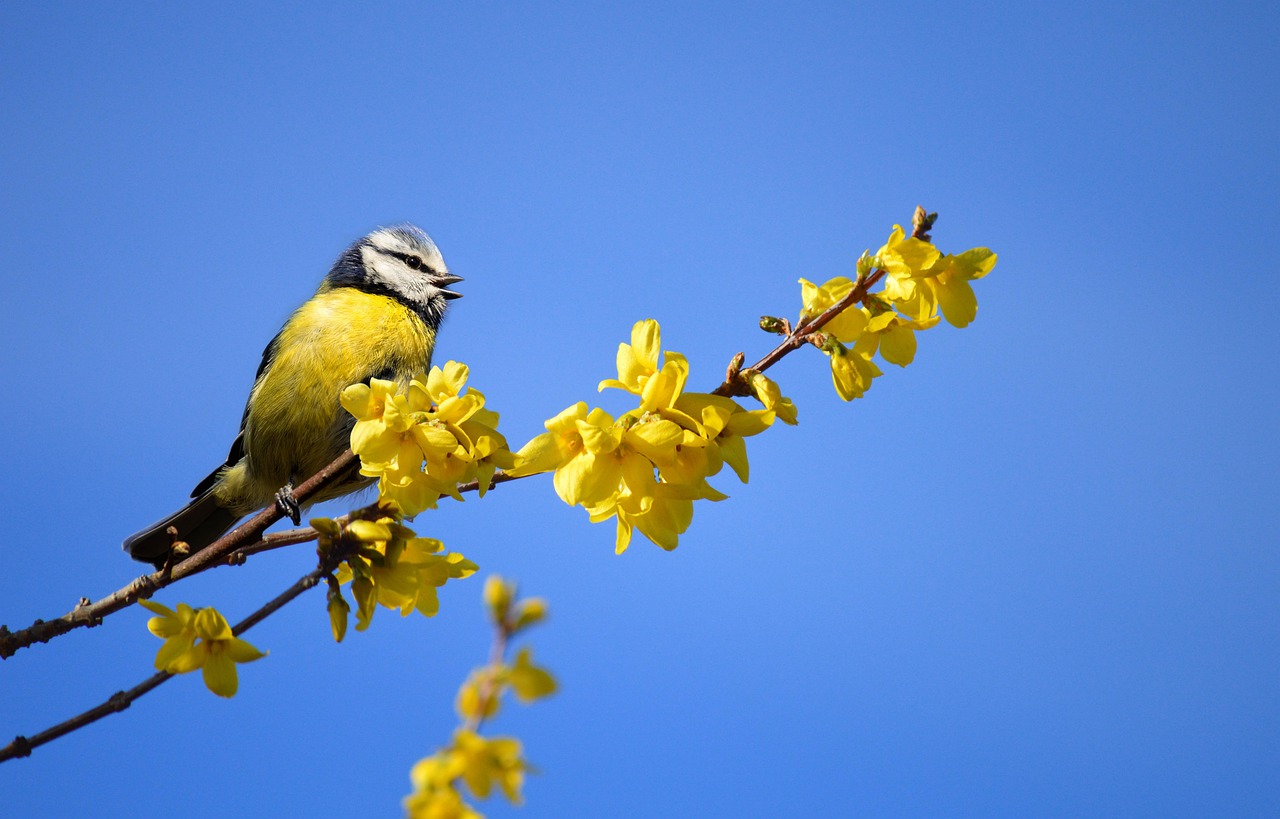Yellow flowering shrubs can instantly transform your landscape, adding warmth and vibrancy to gardens, yards, and outdoor spaces. With their bright blooms, these shrubs not only offer aesthetic appeal but also attract pollinators, enhance biodiversity, and provide year-round interest. Whether you are looking to create a focal point or a stunning backdrop, yellow flowering shrubs are an excellent choice for gardeners of all skill levels.
Incorporating yellow flowering shrubs into your landscape design can elevate the visual impact of your garden. These shrubs bloom during various seasons, ensuring that you can enjoy their beauty from early spring through late fall. Additionally, their diverse sizes and shapes make them suitable for different garden styles, from formal hedges to casual cottage gardens.

When selecting yellow flowering shrubs for your garden, consider factors such as climate, soil type, and sunlight exposure. Understanding the specific needs of each plant will help you create a thriving environment that showcases their full potential. Below are some key reasons to choose yellow flowering shrubs for your landscape:
- Vibrant Color: Yellow flowers add brightness and cheerfulness to any garden.
- Attract Pollinators: Many yellow flowering shrubs are excellent for attracting bees, butterflies, and other beneficial insects.
- Seasonal Interest: With various blooming periods, these shrubs can provide color throughout the growing season.
- Diverse Options: There is a wide range of yellow flowering shrubs available, catering to different tastes and garden styles.
Popular Yellow Flowering Shrubs
There are numerous types of yellow flowering shrubs that you can incorporate into your landscape. Each variety has its unique characteristics, making them suitable for different gardening needs. Below is a selection of some of the most popular yellow flowering shrubs:
| Shrub Name | Bloom Time | Height | Sun Requirements |
|---|---|---|---|
| Forsythia | Early Spring | 3-10 feet | Full Sun |
| Spirea ‘Goldmound’ | Late Spring to Early Summer | 1-3 feet | Full Sun to Partial Shade |
| Hypericum (St. John’s Wort) | Summer | 2-4 feet | Full Sun |
| Kerria japonica | Spring to Early Summer | 3-6 feet | Partial Shade |
| Buddleia ‘Honeycomb’ | Summer | 4-6 feet | Full Sun |
Each of these shrubs offers distinct advantages, from the cheerful blooms of Forsythia in early spring to the long-lasting flowers of Buddleia in summer. When planning your garden, consider combining different varieties to enhance visual interest and prolong the blooming period.
In addition to their ornamental value, yellow flowering shrubs can serve practical purposes in the landscape. They can be used as hedges for privacy, as foundation plantings to soften the look of your home, or as border plants to define garden paths. Their versatility makes them a favorite among landscape designers and homeowners alike.
As you explore the possibilities of incorporating yellow flowering shrubs into your landscape, keep in mind their growth habits and maintenance needs. Some may require pruning after blooming, while others thrive with minimal care. Understanding these requirements will help you make informed choices that suit your gardening style.
Choosing the Right Location for Yellow Flowering Shrubs
When selecting a location for your yellow flowering shrubs, several factors should be considered to ensure optimal growth and blooming. The right placement can enhance their beauty and health, making your landscape flourish. Here are key aspects to keep in mind:
- Sunlight: Most yellow flowering shrubs thrive in full sun, which typically means six or more hours of direct sunlight each day. However, some varieties can tolerate partial shade.
- Soil Type: Well-draining soil is crucial for the health of these plants. Sandy loam or loamy soil often provides the best environment.
- Space: Consider the mature size of the shrub. Ensure there is enough space for them to grow without overcrowding.
- Wind Protection: Positioning shrubs near structures can shield them from harsh winds, which may damage delicate blooms.
Soil Preparation and Planting Techniques
Preparing the soil properly before planting yellow flowering shrubs can significantly impact their growth. Here are some steps to follow when preparing your garden bed:
- Test the Soil: Conduct a soil test to check pH and nutrient levels. Most yellow flowering shrubs prefer a slightly acidic to neutral pH (around 6.0 to 7.0).
- Add Organic Matter: Incorporate organic matter such as compost or well-rotted manure to improve soil fertility and drainage.
- Tilling: Till the soil to a depth of about 12 inches to break up any compacted layers and ensure good root penetration.
- Watering Before Planting: Water the area thoroughly a day before planting to ensure the soil is moist but not waterlogged.
When planting, dig a hole that is twice as wide as the root ball but no deeper than the root ball itself. Gently loosen any tightly bound roots and place the shrub in the center of the hole. Backfill with soil and water thoroughly to eliminate air pockets.
Maintenance of Yellow Flowering Shrubs

Caring for yellow flowering shrubs is essential to keep them healthy and blooming beautifully throughout the growing season. Here are some maintenance tips to consider:
- Watering: Newly planted shrubs require consistent moisture until established. Once mature, most yellow flowering shrubs are drought-tolerant but will benefit from regular watering during dry spells.
- Fertilizing: Use a balanced fertilizer in early spring to promote healthy growth. Follow package instructions for application rates.
- Pruning: Prune after flowering to maintain shape and remove any dead or damaged branches. Some shrubs may require minimal pruning, while others benefit from more extensive shaping.
- Pest Control: Regularly check for pests such as aphids or spider mites. Treat infestations promptly with insecticidal soap or other organic solutions.
Seasonal Care Considerations
The care requirements for yellow flowering shrubs can vary with the seasons. Here are some seasonal care tips:
- Spring: This is the best time to prune and fertilize your shrubs as they awaken from dormancy.
- Summer: Monitor watering needs closely during hot months, especially for newly planted specimens.
- Fall: As temperatures cool, stop fertilizing and prepare your shrubs for winter by mulching around their base to retain moisture and protect roots.
- winter: In colder climates, consider wrapping younger shrubs with burlap or using protective coverings during extreme weather conditions.
By paying attention to location, soil preparation, and ongoing care, you can ensure that your yellow flowering shrubs thrive, ultimately enhancing the beauty of your landscape year-round.

Companion Plants for Yellow Flowering Shrubs

Choosing the right companion plants for your yellow flowering shrubs can enhance their beauty and create a harmonious landscape. Companion planting involves selecting plants that thrive together and support each other in terms of growth, pest control, and aesthetics. Here are some excellent companion plants to consider:
- Lavender: The aromatic lavender not only complements the vibrant yellow hues but also attracts pollinators while repelling certain pests.
- Blue Salvia: The cool blue flowers of salvia create a beautiful contrast against yellow blooms, making both plants stand out.
- Daylilies: These hardy perennials offer various colors, including yellow, and their long blooming seasons pair well with flowering shrubs.
- Catmint: Its gray-green foliage and lavender flowers provide a soft backdrop, enhancing the overall color scheme of your garden.
Designing with Yellow Flowering Shrubs
Incorporating yellow flowering shrubs into your landscape design requires thoughtful planning to achieve a cohesive look. Here are some design principles to consider:
- Color Harmony: Aim for a balanced color palette by pairing yellow flowers with complementary or contrasting colors. For example, purples and blues create a striking contrast.
- Height Variation: Use taller shrubs as backdrops and shorter ones in the front to create depth and visual interest. This layering effect enhances the overall design.
- Seasonal Interest: Select a mix of shrubs that bloom at different times to ensure continuous color throughout the seasons.
- Texture Variety: Incorporate plants with different leaf shapes, sizes, and textures to add dimension to your landscape.
When designing your garden, consider creating focal points using yellow flowering shrubs. These can be placed near entryways, patios, or pathways to draw the eye and create inviting spaces. Additionally, they can soften hardscapes like fences or walls, blending the natural landscape with structural features.
Pest and Disease Management
While yellow flowering shrubs are generally hardy, they can be susceptible to certain pests and diseases. Being proactive in managing these issues is vital for maintaining their health. Here are common pests and diseases to watch for:
- Aphids: These small insects can suck sap from plants, causing leaves to curl or yellow. Regularly inspect leaves and apply insecticidal soap if needed.
- Spider Mites: These pests thrive in dry conditions and can cause stippling on leaves. Increase humidity around plants and use horticultural oil for control.
- Powdery Mildew: This fungal disease appears as a white powdery substance on leaves. Ensure good air circulation and apply fungicides if necessary.
- Root Rot: Overwatering can lead to root rot. Ensure proper drainage and adjust watering habits accordingly.
Monitoring your shrubs regularly can help catch problems early before they escalate. Implementing cultural practices such as proper watering, pruning, and selecting disease-resistant varieties contributes to a healthier garden.
Using Mulch for Healthier Shrubs
Applying mulch around yellow flowering shrubs offers numerous benefits that enhance plant health. Here are some advantages of using mulch in your garden:
- Moisture Retention: Mulch helps retain soil moisture, reducing the need for frequent watering.
- Weed Suppression: A layer of mulch can inhibit weed growth, minimizing competition for nutrients and water.
- Soil Temperature Regulation: Mulch helps regulate soil temperature, keeping roots cool in summer and warm in winter.
- Nutrient Enrichment: Organic mulches break down over time, adding valuable nutrients back into the soil.
Select organic mulches like shredded bark or wood chips for the best results. Apply a 2-3 inch layer around the base of your shrubs, being careful not to pile it against the stems. This practice will promote healthier growth and protect your yellow flowering shrubs in various weather conditions.
Creating a Vibrant Landscape with Yellow Flowering Shrubs
In addition to their aesthetic benefits, yellow flowering shrubs play a pivotal role in enhancing the overall health of your garden ecosystem. They can serve as great companions to other plants, creating a biodiverse environment that fosters pollinator activity and improves soil conditions. The vibrant colors and delightful fragrances of these shrubs can also enhance the sensory experience of your outdoor space, making gardens more inviting and enjoyable.
When planting yellow flowering shrubs, consider the overall design of your landscape. Grouping plants in odd numbers, such as threes or fives, can create a more natural and visually appealing look. Additionally, using yellow flowering shrubs as part of a mixed planting scheme not only enhances their beauty but also encourages beneficial insects that help control pests naturally.
Seasonal Displays and Garden Themes
Integrating yellow flowering shrubs into various garden themes can create striking seasonal displays. Here are some ideas for incorporating these vibrant plants into your landscape:
- Cottage Garden: Use a mix of yellow flowering shrubs along with other perennials and annuals to create a lush, informal look that attracts butterflies and bees.
- Formal Garden: Plant yellow flowering shrubs in structured patterns or as hedges to provide a crisp contrast against geometric layouts.
- Wildlife Garden: Combine these shrubs with native plants to support local wildlife, providing food and shelter for birds and insects alike.
- Low-Maintenance Landscape: Select drought-tolerant yellow flowering shrubs to create a beautiful yet easy-to-care-for garden that thrives with minimal intervention.
By thoughtfully choosing the right combinations of plants and design elements, you can create a stunning visual effect that changes throughout the seasons. This dynamic approach allows you to enjoy the beauty of your garden year-round.
Final Thoughts
Yellow flowering shrubs are a valuable addition to any landscape, providing color, texture, and life. Their ability to brighten up gardens instantly makes them an appealing choice for gardeners looking to enhance their outdoor spaces. By selecting the right varieties, understanding their care requirements, and pairing them with compatible plants, you can create a vibrant and thriving environment that attracts pollinators while being visually stunning.
As you embark on your gardening journey with yellow flowering shrubs, remember the importance of maintenance, seasonal care, and design principles. Each step you take in planning your landscape will contribute to the overall health and beauty of your garden. Whether you are an experienced gardener or just starting, incorporating these cheerful shrubs will undoubtedly elevate your landscape and bring joy to your outdoor experience.
In conclusion, the world of yellow flowering shrubs offers endless possibilities for creativity and enjoyment in gardening. With proper planning and care, these vibrant plants can transform any outdoor space into a lively sanctuary that celebrates nature’s beauty.
